
If you can't get to the hills or crags over the festive season then the next best thing is reading about them. From long-awaited new guidebooks, to lavish landscape photography, via biographies of some inspiring figures in hill running and mountaineering, 2023 produced a good crop of titles.
Whether you're present buying for someone else or writing your own list to Santa, check out our pick of the best books published over the last year.
Rob Greenwood
One Man's Legacy
by Mike Dixon (Scottish Mountaineering Press)
When I started climbing, One Man's Mountains was a must-read book in the canon of mountain literature. A collection of essays and articles written by the late, great Tom Patey, it is brimful of tales told with a warmth and wit unlike anything I'd read before. One Man's Legacy takes a different approach, with author Mike Dixon drawing upon the personal experiences of a great many people that knew Patey throughout his life. The collective voice provides a much broader and more balanced view of the man.
It would be easy for a book such as this, written about a climber whose place in history is assured, and all the more legendary as a result of his untimely death, to portray a rose tinted view, but it's the unvarnished truth that its author has sought. Some of the accounts of Patey's personality and behavior indicate a single-minded, bullish, obsessive side which can be quite uncomfortable to read about. We all know of that fun loving, song singing side, but he had his flaws and I felt that One Man's Legacy offers a far more meaningful insight into the man himself, both good and bad, than accounts I'd read previously.
Aside from the writing, the book itself is a thing of beauty. Scottish Mountaineering Press set a high standard with The Fox of Glen Coe and One Man's Legacy raises the bar even higher. From the quality of the paper and binding, to the fonts and the layout itself, it's simply stunning, produced to a standard that few others are operating at in climbing and mountain publishing.
From One Extreme To The Other
by Mike Hartley (Self Published)
This is one of those autobiographies I'd always hoped would eventually be written. Suffice to say I'm glad it has, and I've no doubt a great many others will be too. Mike Hartley's running achievements are a thing of legend, with highlights including the Southern Upland Way, Pennine Way, Coast to Coast, and the Big Three Rounds Back-to-Back.
I grew up on stories of Mike Hartley's feats of endurance, although as a child I found them hard to comprehend. As I grew older and did more running I began to get a vague grasp of just how impressive what he did was, but even then, the pace at which he did his many record breaking runs really was unfathomable. One of the brilliant things about this book is that it gives a glimpse of what's required - both physically and mentally - to achieve what he has. It's also a testament of the support his wife, Gill, gave him throughout these epic runs, with her own immortal lines on the matter being "behind every "great" man there is a gullible woman".
However, if you're expecting a book that's exclusively about running then you're in for a surprise, because Mike is arguably a climber who runs, as opposed to a runner who climbs. The first time I met Mike in person was in Yosemite Valley, where he was solo aid-climbing, and I remember being absolutely star struck - how can the legend become even more legendary?! In this book you realise just how much more he's done…
Dan Bailey
Lowland Outcrops
by Topher Dagg (Scottish Mountaineering Press)
In recent times the Scottish Mountaineering Press have gone from strength to strength, with a renewed emphasis on design and modern layouts, and a bumper crop of quality guidebooks. Big news in 2023, 18 years after the previous edition, is Lowland Outcrops, the much-anticipated new edition of the guide to the Central Belt crags.
This is the climbing most local to the greatest number of Scottish climbers, and while no one could disagree that Lowland Scotland is the poor cousin of the Highlands and Islands in terms of both quality and quantity, and the area has a deserved reputation for grotty quarries, there's still plenty to love. As an ex-Central Belter myself, I'd argue that from the mid grades upwards the best of it compares head-to-head with single pitch routes anywhere in the country.
There's plenty of variety too, including some great natural outcrops as well as those scruffy quarries, and even sea cliffs and a mini-mountain crag for added interest. It's not all about graffitied dolerite either, with sandstone, basalt, greywacke, schist and limestone also to be found. While trad still makes up the bulk of the climbing, sport climbing and bouldering have increasingly featured too. The shiny new Lowland Outcrops ranges far and wide across it all, usefully bringing sport, trad and bouldering into a single volume. At well over 350 pages, and coming in the imprint's medium format size, this hefty tome is the definitive resource for all Central Scotland climbing.
Don't judge a book by its cover, they say, but those gracing the new generation of SMC guides are literally works of art, each a stunning photo-realistic painting by the very talented Christopher Smith-Duque. Featuring Dumbarton Rock in dramatic contrasty light, and bearing the now-trademark retro typeface, Lowland Outcrops is a real beauty.
The high production values continue within, where the publisher's distinctive design identity is in evidence in the attractive layouts and easily-navigated information. For each crag, handy maps and at-a-glance symbols augment the written content, and the topos are a big step up from those in the previous guide. If I have a criticism of the topos, it's that not enough is made of them, and while the layout looks very smart it does introduce constraints to their size, making some of the busier crags a bit squished and cluttered. Doing away with the page borders and allowing topos to spread right to the edge of the paper would have given them more room to breathe, improving clarity. It's also a bit of a pain that route descriptions don't always appear in the same spread as their topos.
What of the photography? At their best the action shots are great, with my (partial) personal favourite being UKC's Stephen Horne on Chemin de Fer, photographed by our own Martin McKenna. There's a fair amount of so-so stuff too, but while not all Central Belt venues are hugely photogenic the pictures do at least give a good sense of the character of crags and climbs.
An interesting addition is the inclusion of several mini-interviews with local climbers. Scattered throughout the text, these portraits give the book a friendly feel, and along with the action shots they help reflect the diversity of the scene here. Climbing is no longer just for white men (if it ever was) - an admirably inclusive ethos that runs very subtly through the book, without coming across as preachy virtue-signalling. I don't think the mini interview idea would suit every guide, but it works here.
In terms of clarity, attractiveness and sheer inspiration, the new Lowland Outcrops is a major improvement on the previous guide. Even if you already own the old edition it's well worth making the upgrade - especially for all the sport climbing and bouldering that has been developed in the interim. Climbing in Scotland's Central Belt has never looked so good. I'm almost tempted to head back down there for a trip; can't get enough of those quarries.
For more, see guide author Topher Dagg's recent pick of the Central Belt's more beginner-friendly venues:
The Great Wilderness
by Alex Nail (self published)
Which is the greatest Scottish mountain region of them all? For that special west coast combination of ruggedness and sheer spectacle you can't beat Wester Ross; and the heart of this revered area - symbolically and literally - has to be Fisherfield and Letterewe. Hidden away between the landmark peaks of Slioch and An Teallach, this wonderland of remote hills, bare crags and pristine lochs amply lives up to its romantic alias, the Great Wilderness.
From the idyllic wooded islands of Loch Maree to the jagged heights of An Teallach, this stunningly uncompromising place is captured in all its moods and seasons by the talented landscape photographer Alex Nail, in his new book The Great Wilderness. A self-published book produced to a lavish standard, it's an achievement of the highest order, a work of art from the embossed fabric cover to the hand-drawn cartography. Yes I'm unashamedly biased - this is my favourite place in the world - but I can honestly say that it is many years since I felt quite as inspired by a mountain photography book.
Rocky, boggy, and far from roads, it's a hard subject for a major photographic project. Anyone can get a decent image in Torridon or Assynt, but the awkward bit in between does not yield half so easily. Alex walked more than 400 miles over the course of shooting this book, sleeping out for around 50 nights, contending with the best and worst of mountain weather, and often coming home empty handed. Ten trips were made to A' Mhaighdean alone - the Munro generally reckoned Scotland's least accessible. The images are certainly stirring; some approach the transcendent. But they did not take themselves.
"I have seen magnificent views" writes Alex in the intro "But I have also been tent-bound in stormy weather, had many sleepless nights, and waited hopelessly in the cloud on mountaintops."
Cold, rain, snow, midges - anyone who's been there will be able to imagine the tenacity that this body of work must have required. The rigour is of course a great part of its appeal as a reader and viewer. Out of adversity he's crafted something of rare value, and the results are quite simply stunning.
It's an eye-catching start on An Teallach and the Beinn Deargs, with a series of wide-angle shots that deftly combine the extreme topography, the fleeting drama of passing weather, the gritty texture of sandstone and a wonderful clarity of light. From these opening pages you're immersed. Cloudless summer days may be best for walking and climbing, but it's imperfect weather that offers the most exciting images. Of course there are moody skies and boiling clouds aplenty among the photographs here. In some hands it could get showy or bombastic, but there's a practised light touch to it, and for every low-angled dawn/dusk shot or stark winter scene there's another conveying the subtlety of an overcast day, or the rich tones of autumn foliage.
One thing it isn't, is cliched. An Teallach from the north? Yes it's gobsmacking, but how often do we need to see it in print? Alex instead favours the less-obvious southern side; and photographically, I'm inclined to agree this is actually the more interesting. Likewise Slioch; of course it's a feature, yet the lazy Loch Maree shot you can almost take from the car doesn't get a look-in. He's put in imagination, and plenty of leg work. The style is 'very true to life', too, not marred by the over-reliance on processing software that is the undoing of many photos these days.
In the way it so successfully distills the essence of this special place, the unique feeling of being there, The Great Wilderness is a total triumph. It's worth every penny of the hefty cover price, and I would be doubly pleased to pay it knowing that it helps a very dedicated photographer earn a living. If you can't persuade anyone to buy it for you this Christmas, then treat yourself. Then get on the road and head over to Wester Ross.
Tom Ripley
North Wales Climbs
by Mark Reeves and Mark Glaister (Rockfax)
A new edition of a favourite guidebook can help you to view a familiar area with fresh eyes, giving some much needed inspiration. The new edition of North Wales Climbs is jam packed full of inspiration and information on the area's best rock climbs. The book describes most of the great crags and climbs in the familiar user-friendly Rockfax format.
As always with a selective guide there are a few notable inclusions and omissions, something it's fun to argue about endlessly since no one is ever likely to agree with everything. I'd have liked to have seen Cromlech Girdle and Nightmayer included on Dinas Cromlech. The Ogwen section features lots of new additions, but I thought it was a bit of shame that there were so few action shots, as it is one of the best low grade climbing areas in the UK. On the other hand Carreg y Foel Gron, Craig Dinas, and Craig Rhiw Goch we not included in the previous edition, and the drone-assisted topos and action shots of these crags will definitely inspire me to make future visits.
Anglesey is one of the areas that has seen the biggest increase in development since the previous edition. Dozens more routes have been added to both the North and South Stack sections. Interestingly neither State of Saturation or Poseidon, two great mid-grade routes at the ever popular Castell Helen, have been included. That said it was great to see the recently rediscovered, and totally brilliant, Main Wall on the Main Cliff included in a guidebook for the first time.
The North Coast limestone is another area that has seen big expansion since the last edition, and the addition of more routes on the Orme is welcome. Penmaenbach Quarry makes it in, which is great; though it's a shame that both Craig y Forwyn, one of the most idyllic venues on the North Coast, and also the popular mid grade sport at Llandulas Cave, have been omitted.
All in all North Wales Climbs is an improvement on the previous edition, with many extra routes, clear topos, and inspiring action shots. It will make a great Christmas gift for any keen climber.
Keri Wallace
Voices from the Hills
by Steve Chilton (Sandstone Press)
This well-researched book reveals an important untold story - that of the pioneering women in the British fell running community, speaking out against gender inequality in their sport and triggering a landslide of progress, which is very much still relevant today.
As the most recent book from established running author Steve Chilton, Voices from the Hills is both broad in its scope and thorough in its depiction of the talented yet humble trailblazers within its pages. Through insightful interviews, this chronological anthology reveals the scale of change that has taken place, from the beginning of fell running in the 1950s to today's era of ultra-distance running, where women can often be found leading the field.
The author highlights the frustrating sexism, barriers and inequalities that women have faced historically, in racing and race reporting. But the book isn't a downbeat read; more an inspiring collection of successes, battles and first-hand experiences. It's a joy to read how far we have come!
Without knowledge of the pioneers and without a heritage, how can women achieve the same sense of belonging in the mountains as men? This book goes a long way to correcting that imbalance, re-writing the history of running in the UK hills. It is a valuable archive for future generations, giving our female forerunners the recognition they deserve for their contribution to the wider narrative of women in sport.
Toby Archer
Adventures For Kids
Saul and Henry Taylor (The Future Primitive)
This is a bouldering guide masquerading as a book about getting your kids out into nature. Or maybe it's a book about getting your kids out into nature masquerading as a bouldering guide? Perhaps it doesn't matter which, as it does both admirably and I suspect will be enjoyed by both parents and children as a result.
The title of the book and front cover don't give much away. But actually what is in the book are a series of outdoor adventures in the Peak District - circular walks that, along with other points of interest and wildlife to spot while on the way, all include stops at rocks with a big selection of kid-sized boulder problems to do. Of course you don't need to do the rest of the walk, you could just go bouldering. And indeed, if the weather isn't playing ball, you could skip the bouldering and just go for a walk instead.
Each walk has an excellent introductory section that describes the length and terrain of the walk, provides public transport options for getting there plus also parking, says where the nearest public loos are, the nearest places to get food and drink, and finally the nearest hospital for any unfortunate accidents that might happen! The book also uses Harvey mapping meaning you can navigate around the walks and to the bouldering circuits without any additional map. Each walk also has a "things to see" section with wildlife and points of historical or geographical interest to spot and tick off. This could be ring ouzels and millstones at Stanage or dippers and fossils in the stepping stones in Dovedale. This is all really nicely done and will give parents, even those who know the areas covered by the book well, some new ideas to get their kids interested in the landscapes around them.
What sets Adventures For Kids apart from other family-friendly walking guides are the child-oriented bouldering circuits. This is what makes the book really fun and will give it appeal to climbing families and parents.
Family team of Henry and Saul have discovered/invented several hundred mini-boulder problems, grading them, putting them on topos and describing them. They've used Font grades for them, the vast majority of them getting grades between 3 and 4+, with the occasional 5. After over 30 years of climbing, I only got to Fontainebleau for the first time last summer so now know that doing a circuit of Font 3 and 4 problems there is really hard work with some of the problems feeling both ridiculously technical for those modest grades and high enough to be scary.
Have no fear with problems described in Adventures For Kids - the grades seem to reflect far more how a 115cm six-year-old finds them, than how a 175cml 50-year-old does! Most of the problems are really quite small and mum or dad (or big brother in my family) standing behind the junior climber can easily grab them or give them an upward shove if they start to slide or topple backwards. We found a few problems where a bouldering mat might have been nice, but generally a mat just isn't needed as a parent can easily perform the same function. We really appreciated the fun kid-friendly names that had been given to the problems. Our nipper was really taken with the Star Wars droid names theme at the "Junkyard" sector of Stanage Apparent North, having sent R2 D2, 3+, he definitely had to climb BB-8, 4, even if that required a little bit of power-spotting from Dad!
Generally, for helping you find the problems Adventures For Kids works reasonably well. There are a few minor bones to pick if really pushed. The 'view from above' drone-shot of the boulders at Owler Tor has no real orientation points on it, and it took me some time to work out where the topo photos were taken from, as they were not clearly linked to the drone shot from above. I failed to even locate a couple of the boulders on the Birchen circuit (X Marks the Spot and the Shark Fin). We had walked in from the other direction from the suggested start point in the book. This might have already been a slightly longer walk and I was reminded that small kids have limited patience for wandering around looking for stuff when it involves more walking. Finally, some of the photos used in the comic-strip style photo directions to help navigate to boulders are so small that, to my middle-aged eyes at least, they are hard to make out. But as a whole the book works well as a guidebook.
While the Roaches, Dovedale, Cratcliffe and Harborough do all get a look in, the majority of chapters focus on the Eastern Grit edges, from Derwent Edge down to Birchen. Perhaps Henry and Saul will consider doing a second volume majoring on the north west of the Peak for the climbing families of Manchester and that side, or even areas beyond the Peak - I'm sure there would be a market for them.
We received the review copy of the book in early autumn, so opportunities to get out and enjoy the walks and circuits have been limited, and often damp and muddy. But from the fun we have had already, I'm looking forward to spring when we will go the whole hog: pack a proper picnic and see if we can tick all the problems on a circuit as well as tick off all the wildlife and points of interest!
Natalie Berry
Extreme Horizons: The Climbing and Adventure Essays
by Dave Pickford
Climbing and mountaineering seem to lend themselves well to essays as a form of literature. Collections such as The Climbing Essays by Jim Perrin and The Games Climbers Play by Ken Wilson among others have long inspired with their exploration of historical events and the emotions that surface during even the most fleeting moments on the rock or mountain.
In Extreme Horizons, outdoor writer, editor, photographer and climber David Pickford (editor of BASE Magazine and formerly CLIMB) blends captivating images with erudite words on his worldwide travels, from the shores of his native South-West coast to the deserts of Oman and beyond.

This hardback collection covers a variety of outdoor activities and adventure travel alongside climbing, from motorcycle journeys to sailing expeditions. Some of the essays have been featured and well-received on UKC, including The Heart of Nature - Climbing as a Paradigm of the Human Condition, in which Dave explores what makes climbing unique and how storytelling can fail to capture the full meaning of an experience, and A Flare in the Dark, an exploration of the value of climbing to those who climb, the value it has, if any, to the rest of humanity and the value it could bring to people in the future.
At a time when risk-taking, leisure activities and personal exploration might seem frivolous, Dave's writing highlights the worth of climbing and travel, whereby connections with other people and cultures can enhance understanding of the world. This book is the antithesis of the rapidly-written autobiographies and ego-fuelled Instagram posts: there is depth to the writing, a respect for climbing history and a curiosity about human nature and the environment that is often lacking in modern outdoor literature.
As adept with a camera as with the written word, Dave's photography enriches each essay. An excellent addition to the keen or armchair climber's bookshelf or coffee table.


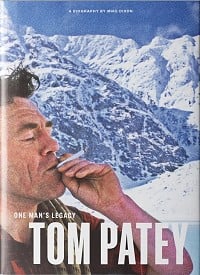
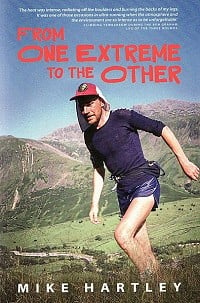
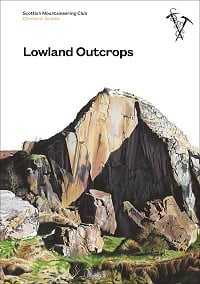


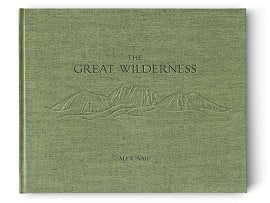


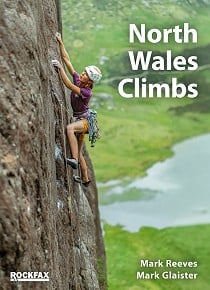
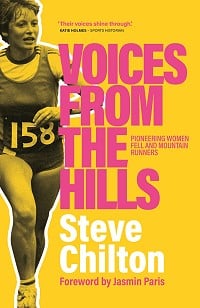
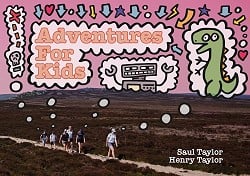



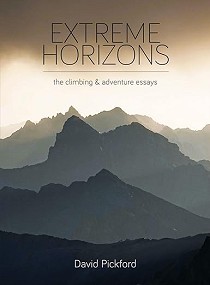















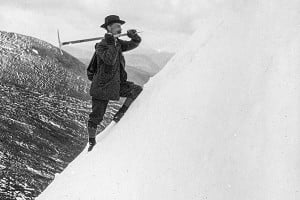

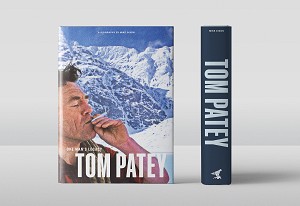
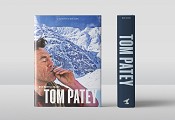

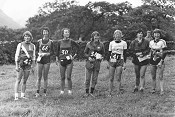

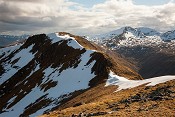

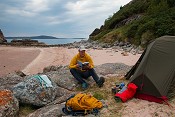
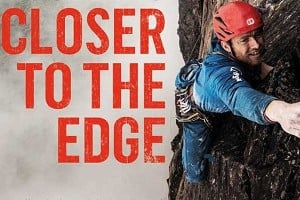


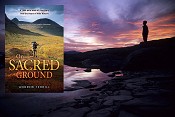
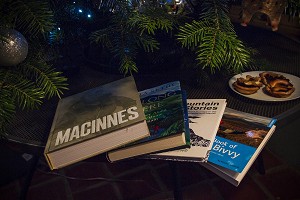
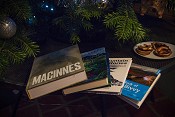


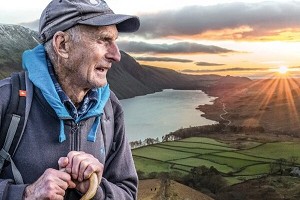

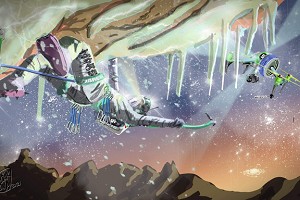

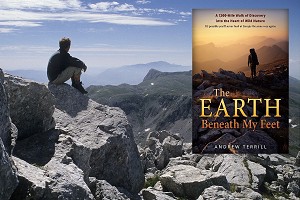
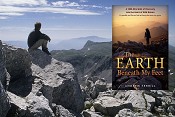
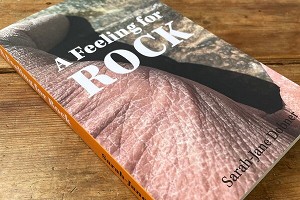
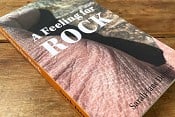
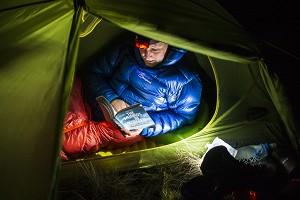
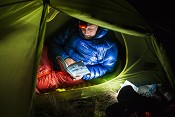
Comments
In my review of the "Adventures for Kids" I've just noticed I've made a mistake - where it says "I failed to even locate a couple of the boulders on the Burbage circuit (X Marks the Spot and the Shark Fin)." That should be the Birchen circuit, not the Burbage circuit. Apologies!
You're fired
I did consider blaming it on an editing mistake, but then decided it was far more likely to be me typing too quickly about my local crags, than you 700 kms away deciding to randomly to swap some crag names around! :-)
<hangs head in shame>
thanks for the recommendations! that is a good mix and yet still all very much on topic.
i just recently finished david smart’s royal robbins biography and was quite taken. very readable, and makes a good attempt at making robbins understandable, at different points of his life. i also liked that while it would’ve been easy to just go with how important a role in climbing he played and hang everything off the size of his legend, it didn’t shy away from also telling of less favourable turns later in his life (re environmentalism, for example).
also, a nice fleshing out of his relation to harding for all who only saw the rivalry in valley uprising.
Thanks for the information!